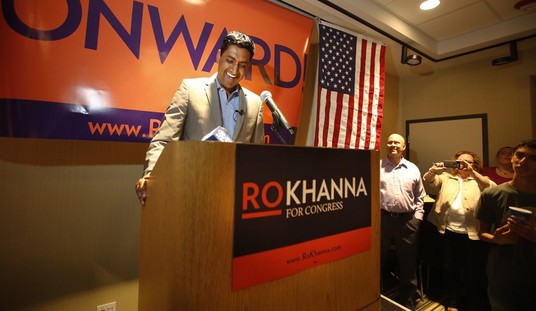If the White House hoped to convince Americans about its strategy for handling ISIS, it has failed miserably at doing so. While Eric Holder says we’re not really at war-war, the State Department considers it an opportunity for a jobs program, and Obama insists that we need to concentrate on being better communicators, a growing majority of Americans consider ISIS a threat to national security — and want to send troops to fight them. The change from October of last year in this CBS poll is striking:
Amid more executions by the militant group ISIS, Americans increasingly see the group as a threat to the U.S. Now, 65 percent of Americans view ISIS as a major threat – up from 58 percent in October – while another 18 percent view it as a minor threat. Majorities of Republicans (86 percent), Democrats (61 percent) and independents (57 percent) view ISIS as a major threat.
With concern about ISIS growing, support for the use of U.S. ground troops in the fight against ISIS has risen. For the first time, a majority of Americans (57 percent) favor the U.S. sending ground troops into Iraq and Syria to fight ISIS. In October, Americans were divided (47 percent favored and 46 percent opposed), and in September these numbers were reversed (39 percent favored and 55 percent opposed).
It must be those darned neocons, right? Not exactly:
Back in October, 56 percent of Democrats and 49 percent of independents disapproved of using ground troops – now 50 percent of Democrats approve and 53 percent of independents favor using ground troops.
The topline numbers themselves speak to the failure of the Obama administration to make its sale on indirect intervention and soft power against ISIS. Almost two-thirds now see ISIS as a direct threat, probably thanks to the videos that make that a very clear proposition, and now a majority of 57% want American ground troops to go to Iraq and Syria. That in and of itself is a sea change from 2008, when Obama won a seven-point victory over John McCain on the promise to get troops out of Iraq and keep them out of other Middle East conflicts.
The change in the gap is even more striking. Last October, a month after Obama announced his strategy to deal with ISIS — coalition building, air strikes, no boots on the ground — the US was split on the prospects, with ground-troop deployment showing a one-point advantage, 47/46. That has changed 19 points in the gap away from Obama’s position, 57/37, in the five months since. It’s a big vote of no confidence in the administration on national security. Obama won office by getting ahead of a curve rather than leading it; now he’s facing a curve in the opposite direction, and he seems not just powerless to reverse it, but might be aggravating the problem with his public-speaking stumbles.
CBS asked former CIA deputy director Mike Morell whether Obama’s making a big mistake by trying to avoid saying the words “Islamist extremism” in relation to terrorism. “I get what the President is doing,” Morrell says, but he’s not going to convince the terrorists that he’s facing reality with that talk. They “believe they are religious warriors … It’s not rhetoric on their part. They really believe it.” It’s not keeping ISIS from “spreading their brand,” either, as Morrell says, although he doesn’t link it to Obama’s focus on communications.
At any rate, Congress has to take up the AUMF debate soon. With these numbers in mind, Republicans should (as I suggested last week) give Obama a “clean” AUMF that authorizes him to use all options against ISIS until we have defeated them — no timetables, no restrictions, just a full authorization, and let Obama either carry the responsibility for his own failing strategy or change it to something more effective.







Join the conversation as a VIP Member